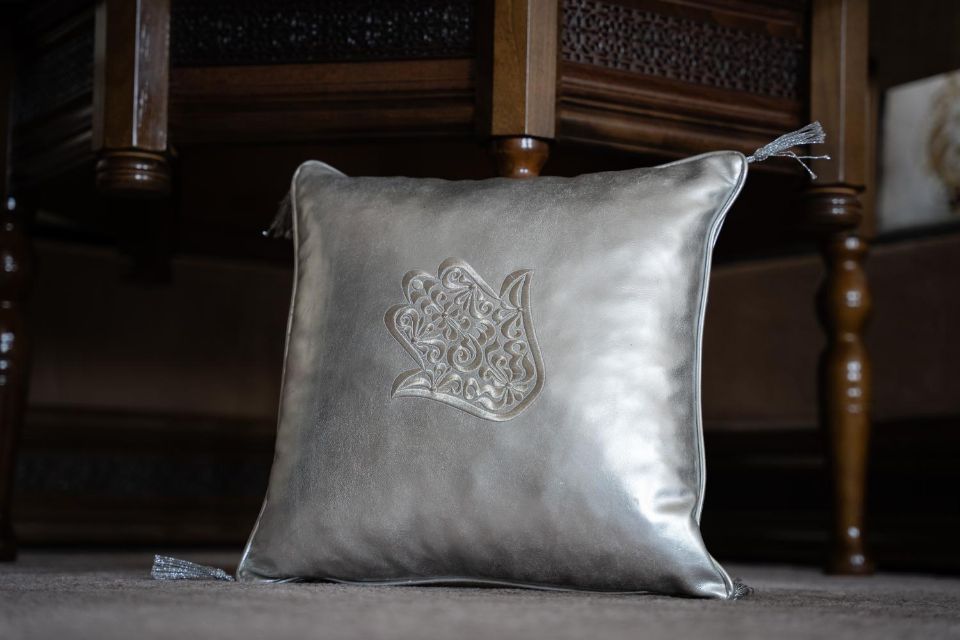Origin and History
This story is about this little hand, which you see here depicted on a silver pillow. I displayed various hands throughout my living room specially for this story. Even though they differ in color and style, they all share the same shape of a palm with three fingers and two thumbs. In many instances there is an eye in the middle, the so-called “eye that sees all.” In the Arabic tradition, the eye is used to watch over the one wearing it, and protect them against evil.
It is hard to say where the hand originally came from. According to some, its origins can be found in ancient Carthage, in present-day Tunisia. Around 1800 BCE, the Phoenicians associated the hand with Tanit, the goddess of the moon and guardian of Carthage. People prayed to her for prosperity and happiness. Over time her hand was used as an amulet or talisman to protect against the evil eye.
The hand was already in use before any of the major religions took shape. Hence, those religions adopted the protective symbol: Jewish people know it as the Hand of Miriam, Christians as the Hand of Maria, and Muslims as the Hand of Fatima, named after the daughter of the prophet Mohammed. The hand also goes by the name of Khamsa, which is the Arabic word for ‘five’.
If you live with objects that have been around since you were little, you can easily overlook their meaning. This happened to me with the hand of Fatima; I never stopped to think about what it stands for. In Moroccan culture, the hand is predominantly used as decoration, mostly in souvenirs and jewelry, as the picture shows.
